
Humphrey DeForest Bogart, colloquially nicknamed Bogie, was an American actor. His performances in classic Hollywood cinema films made him an American cultural icon. In 1999, the American Film Institute selected Bogart as the greatest male star of classic American cinema.

James Francis Cagney Jr. was an American actor and dancer. On stage and in film, he was known for his consistently energetic performances, distinctive vocal style, and deadpan comic timing. He won acclaim and major awards for a wide variety of performances.
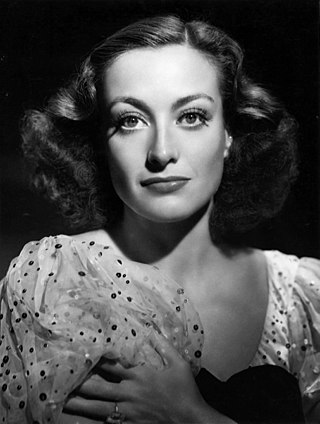
Joan Crawford was an American actress. She started her career as a dancer in traveling theatrical companies before debuting on Broadway. Crawford was signed to a motion picture contract by Metro-Goldwyn-Mayer in 1925. Initially frustrated by the size and quality of her parts, Crawford launched a publicity campaign and built an image as a nationally known flapper by the end of the 1920s. By the 1930s, Crawford's fame rivaled MGM colleagues Norma Shearer and Greta Garbo. Crawford often played hardworking young women who find romance and financial success. These "rags-to-riches" stories were well received by Depression-era audiences and were popular with women. Crawford became one of Hollywood's most prominent movie stars and one of the highest paid women in the United States, but her films began losing money. By the end of the 1930s, she was labeled "box office poison".

Ruth Elizabeth "Bette" Davis was an American actress of film, television, and theater. Regarded as one of the greatest actresses in Hollywood history, she was noted for her willingness to play unsympathetic, sardonic characters and was known for her performances in a range of film genres, from contemporary crime melodramas to historical and period films and occasional comedies, although her greatest successes were her roles in romantic dramas. She won the Academy Award for Best Actress twice, was the first person to accrue ten Academy Award nominations for acting, and was the first woman to receive a Lifetime Achievement Award from the American Film Institute. In 1999, Davis was placed second on the American Film Institute's list of the greatest female stars of classic Hollywood cinema.
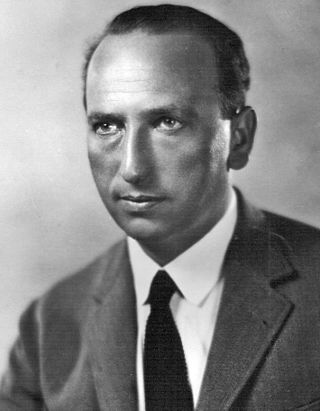
Michael Curtiz was a Hungarian-American film director, recognized as one of the most prolific directors in history. He directed classic films from the silent era and numerous others during Hollywood's Golden Age, when the studio system was prevalent.

Dead Men Don't Wear Plaid is a 1982 American neo-noir mystery comedy film directed, co-written by, and co-starring Carl Reiner and co-written by and starring Steve Martin. Co-starring Rachel Ward, the film is both a parody of and a homage to film noir and the pulp detective films of the 1940s. The title refers to Martin's character telling a story about a woman obsessed with plaid in a scene that was ultimately cut from the film.
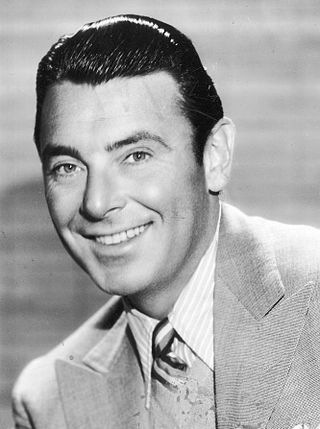
George Brent was an Irish-American stage, film, and television actor. He is best remembered for the eleven films he made with Bette Davis, which included Jezebel and Dark Victory.

Julius J. Epstein was an American screenwriter, who had a long career, best remembered for his screenplay, written with his twin brother, Philip, and Howard E. Koch, of the film Casablanca (1942), for which the writers won an Academy Award. It was adapted from an unpublished play, Everybody Comes to Rick's, written by Murray Bennett and Joan Alison.
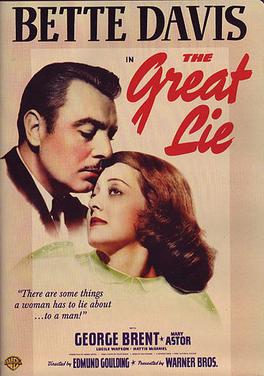
The Great Lie is a 1941 American drama film directed by Edmund Goulding, and starring Bette Davis, George Brent and Mary Astor. The screenplay by Lenore J. Coffee is based on the novel January Heights by Polan Banks.

John Elmer Carson, known as Jack Carson, was a Canadian-born American film actor. Carson often played the role of comedic friend in films of the 1940s and 1950s, including The Strawberry Blonde (1941) with James Cagney and Arsenic and Old Lace (1944) with Cary Grant. He appeared in such dramas as Mildred Pierce (1945), A Star is Born (1954), and Cat on a Hot Tin Roof (1958). He worked for RKO and MGM, but most of his notable work was for Warner Bros.
Ernest Jacob HallerASC, sometimes known as Ernie J. Haller, was an American cinematographer.

Fog Over Frisco is a 1934 American Pre-Code drama film directed by William Dieterle. The screenplay by Robert N. Lee and Eugene Solow was based on the 1932 mystery novel The Five Fragments by George Dyer.

Jimmy the Gent is a 1934 American pre-Code comedy-crime film directed by Michael Curtiz, starring James Cagney and Bette Davis and featuring Allen Jenkins. It was the first pairing of Cagney and Davis, who would reunite for The Bride Came C.O.D. seven years later.

June Bride is a 1948 American comedy film directed by Bretaigne Windust. The screenplay, which was based on the unproduced play Feature for June by Eileen Tighe and Graeme Lorimer, was nominated for the Writers Guild of America Award for Best Written American Comedy. The film starred Bette Davis and Robert Montgomery. The Warner Bros. release marked the screen debut of Debbie Reynolds, although her appearance was uncredited.
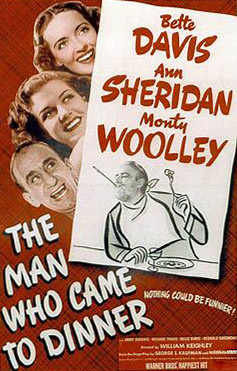
The Man Who Came to Dinner is a 1942 American screwball comedy film directed by William Keighley, and starring Bette Davis, Ann Sheridan and, as the titular character, Monty Woolley. The screenplay by Julius and Philip G. Epstein is based on the 1939 play The Man Who Came to Dinner by Moss Hart and George S. Kaufman. The supporting cast features Jimmy Durante and Billie Burke.

Bruce Lester was a South African-born English film actor with over 60 screen appearances to his credit between 1934 and his retirement from acting in 1958. Lester's career divided into two distinct periods. Between 1934 and 1938, billed as Bruce Lister, he appeared in upwards of 20 British films, mostly of the cheaply shot and quickly forgotten quota quickie variety. He then moved to the US, where he changed his surname to Lester, and found himself for a time appearing in some of the biggest prestige productions of their day, alongside stars such as Bette Davis, Joan Crawford, Tyrone Power and Errol Flynn. Lester himself never achieved star-billing, but was said to have remarked that this at least meant that if a film was a flop, no blame ever fell on his shoulders.
Richard Travis was an American actor in films and television.

Fehmer Christy "Chick" Chandler was an American film character actor who appeared in more than 130 films from 1925 through the mid-1950s. Chandler was known for his starring role as Toubo Smith in the Universal-produced 1955 syndicated television series Soldiers of Fortune.

William Jerome Cagney was an American film producer and actor, remembered for roles in the Monogram Pictures films Lost in the Stratosphere and Flirting with Danger, both filmed in 1934.

Joan Winfield was an Australian-born actress and talented violinist, who appeared in Hollywood films in the 1940s, mostly in uncredited roles. She married director and writer John Meredyth Lucas in 1951.



















